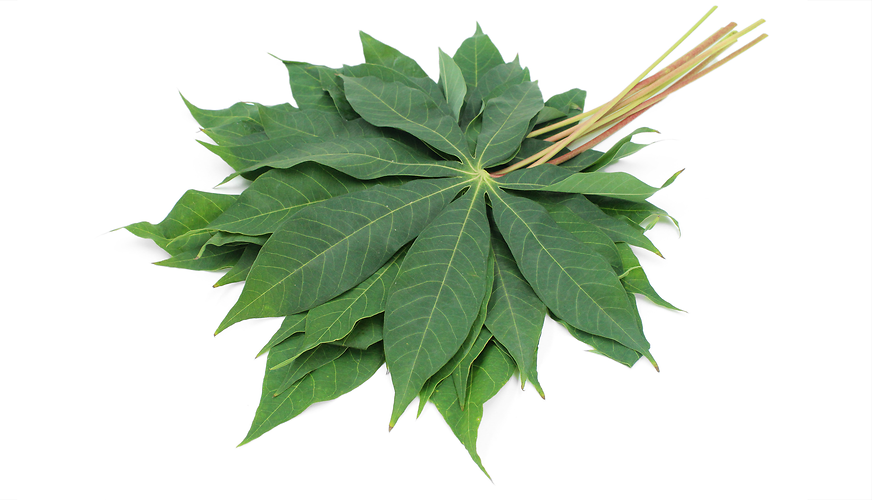


Yuca Leaves
Estimated Inventory, lb : 0
Description/Taste
Yuca leaves are small to medium in size and are slender, palm-like, and lanceolate in shape, averaging 15-20 centimeters in length. The bright green leaves extend from the apex of the woody stems, typically have 5-7 lobes, and are glossy on the surface and matte on the underside. There is also a light green-yellow central vein that runs from the base of the stem through the length of the lobe. Yuca leaves must be cooked before consuming and have a mild, bland flavor similar to spinach.
Seasons/Availability
Yuca leaves are available year-round.
Current Facts
Yuca leaves, botanically classified as Manihot esculenta, grow on a woody perennial shrub and are members of the Euphorbiaceae, or spurge family. Also known as Cassava and Tapioca, yuca plants are known for its starchy root which is one of the top sources of food in developing countries, but the leaves are also used medicinally and in culinary preparations. It is important to note that when raw, Yuca leaves contain high amounts of hydrocyanic acid which is toxic. To remove the toxins, they must be boiled and cooked before consumption.
Nutritional Value
Yuca leaves contain vitamin C, vitamin B, beta carotene, iron, and zinc.
Applications
Raw Yuca leaves are toxic and must be double-boiled for at least fifteen minutes to remove toxic glucosides and the deadly hydrocyanic acid effectively. They are best suited for applications such as boiling and once cooked, they are most commonly used in salads, vegetable rolls, soups, and stews with coconut milk. Yuca leaves can also be processed along with the roots into flour and used in puddings and snacks. Yuca leaves pair well with garlic, chile, onions, turkey, anchovies, or dried shrimp. They are highly perishable and should be used immediately after harvest. Yuca leaves can also be chopped and frozen or dried for extended use.
Ethnic/Cultural Info
Yuca leaves are frequently used in alternative medicine to help reduce symptoms of inflammation, digestive issues, and aches and pain. In Africa, leaves are ground into a powder and used as a compress for fevers and headaches. They are also made into a poultice and applied to sores and skin irritations.
Geography/History
Yuca leaves are native to South America, specifically in the Amazon, and were then introduced to Africa by Portuguese traders in the 16th century. Today Yuca leaves can be found in fresh markets in Africa, the Caribbean, Central and South America, Europe, the South Pacific, Indonesia, Asia, Southeast Asia, and the United States.
Recipe Ideas
Recipes that include Yuca Leaves. One
| International Cuisine |
|
CASSAVA LEAF STEW WITH RICE FROM SIERRA LEONE |
| The Canadian African |
|
Vegan Cassava Leaf Stew (Pondu) |
| Immaculate Bites |
|
Cassava Leaf Soup |




